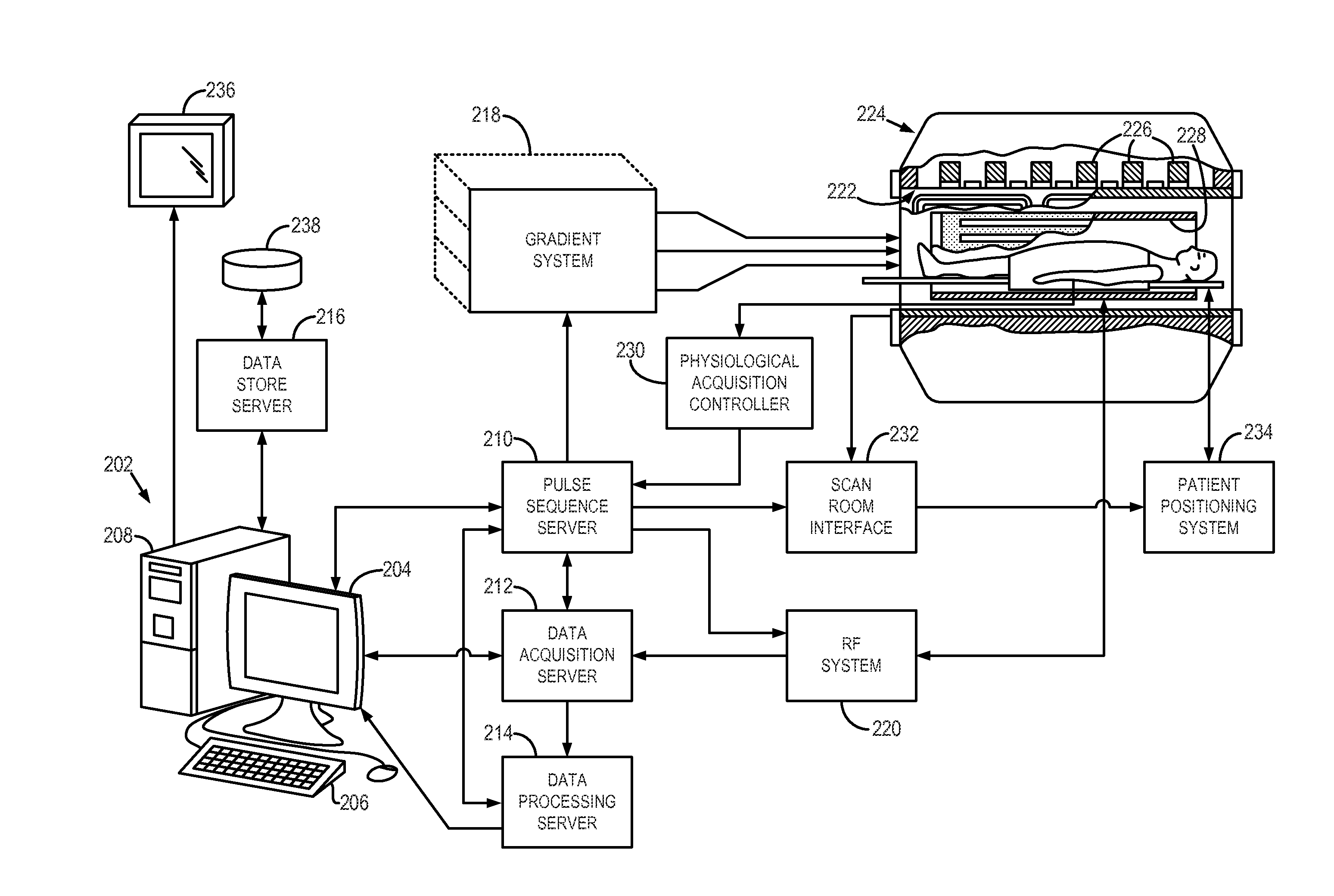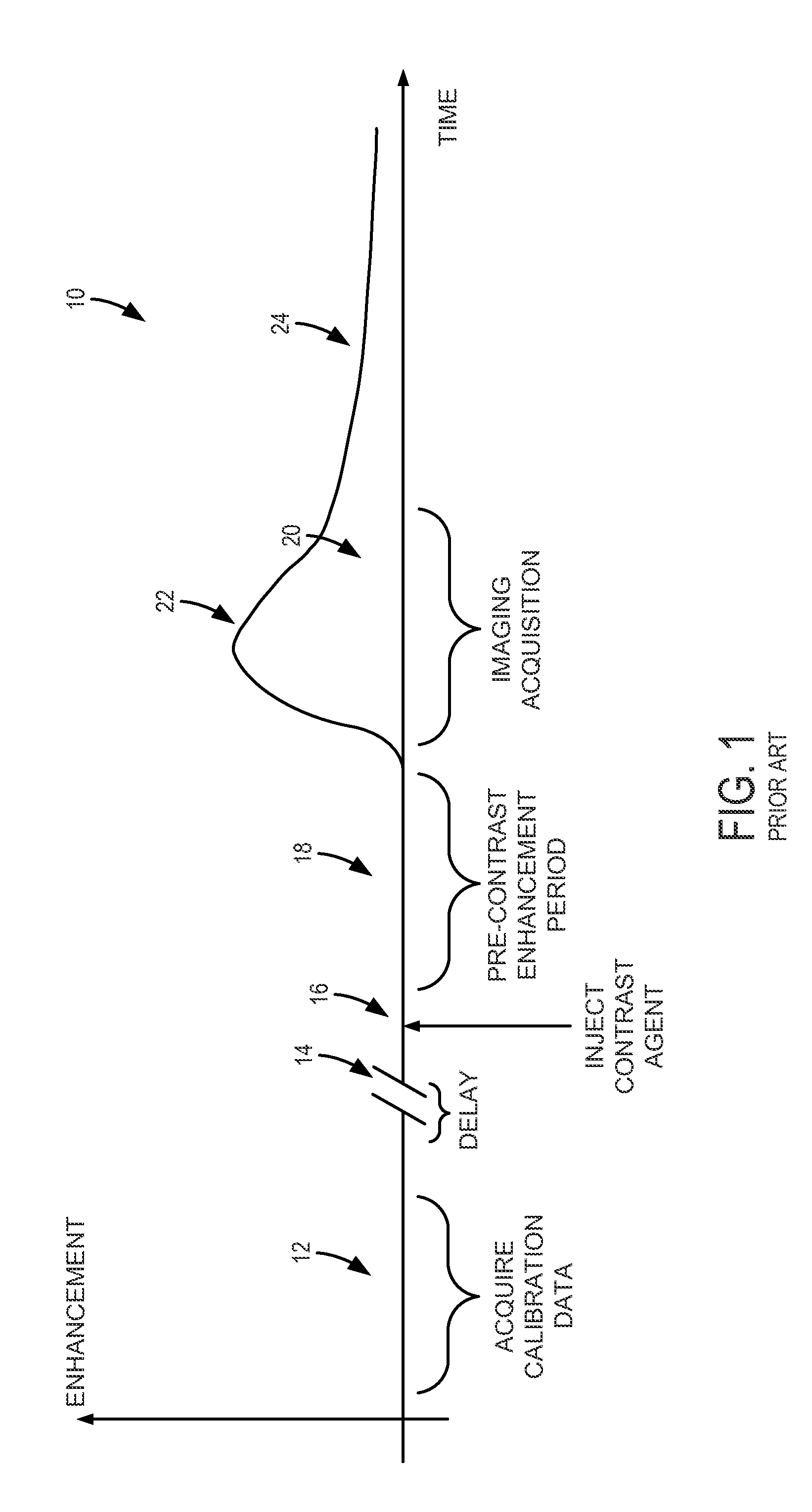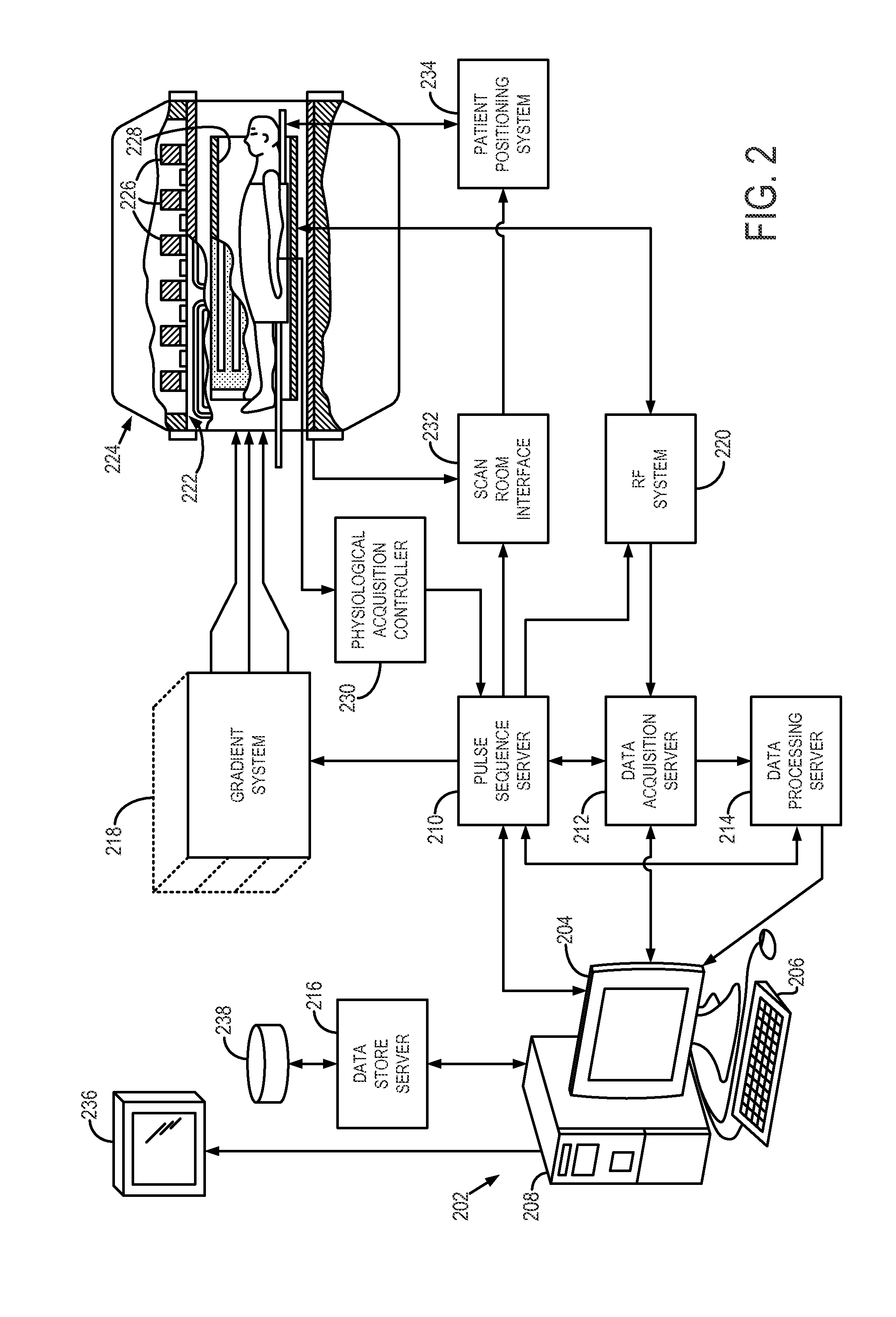System and method for controlling calibration and delay phases of parallel, contrast-enhanced magnetic resonance imaging
a technology of contrast enhancement and imaging, applied in the field of magnetic resonance imaging, can solve the problems of insufficient acquisition time, overhead time required for parallel acquisition, and inability to achieve sufficient acquisition time, so as to improve image quality, reduce the delay associated with pulse sequence download, and simplify the preparation and examination process
- Summary
- Abstract
- Description
- Claims
- Application Information
AI Technical Summary
Benefits of technology
Problems solved by technology
Method used
Image
Examples
Embodiment Construction
[0027]Referring particularly now to FIG. 2, an exemplary magnetic resonance imaging (“MRI”) system 200 capable of practicing embodiments of the present invention is illustrated. The MRI system 200 includes a workstation 202 having a display 204 and a keyboard 206. The workstation 202 includes a processor 208, such as a commercially available programmable machine running a commercially available operating system. The workstation 202 provides the operator interface that enables scan prescriptions to be entered into the MRI system 200. The workstation 202 is coupled to four servers: a pulse sequence server 210; a data acquisition server 212; a data processing server 214, and a data store server 216. The workstation 202 and each server 210, 212, 214, and 216 are connected to communicate with each other.
[0028]The pulse sequence server 210 functions in response to instructions downloaded from the workstation 202 to operate a gradient system 218 and a radiofrequency (“RF”) system 220. Grad...
PUM
 Login to View More
Login to View More Abstract
Description
Claims
Application Information
 Login to View More
Login to View More - R&D
- Intellectual Property
- Life Sciences
- Materials
- Tech Scout
- Unparalleled Data Quality
- Higher Quality Content
- 60% Fewer Hallucinations
Browse by: Latest US Patents, China's latest patents, Technical Efficacy Thesaurus, Application Domain, Technology Topic, Popular Technical Reports.
© 2025 PatSnap. All rights reserved.Legal|Privacy policy|Modern Slavery Act Transparency Statement|Sitemap|About US| Contact US: help@patsnap.com



